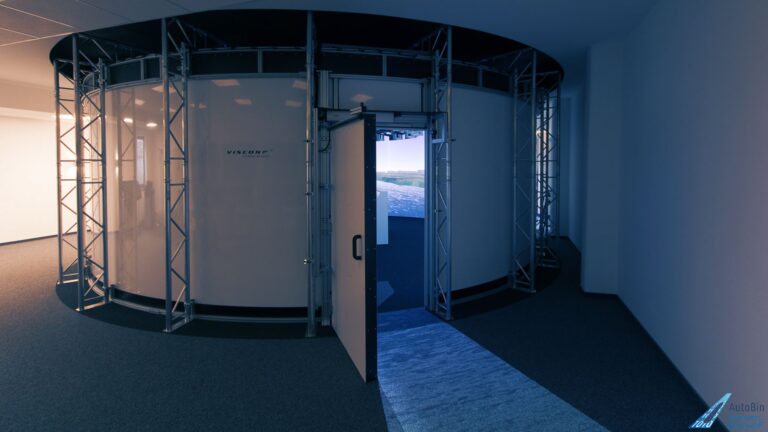The simulation environment as a virtual image of the real world is the central development environment for all control and monitoring algorithms. A digital twin of the test vessel is implemented in the simulation environment.

The development of the automated control of the inland vessel will initially take place in a simulator. In the first work package, the existing simulator will therefore be extended so that sensor readings can be generated virtually. The artificial intelligence (AI) developed in parallel in a modular fashion for ship control and for implementing the driving behavior functions will then be integrated in a simulation model in such a way that a later parallel porting to a real inland waterway vessel will be possible. Furthermore, the behavior of other road users (vessels in the vicinity of the automated barge) will be modeled and integrated into the simulation environment. The development of the AI for the implementation of the driving behavior functions for different tasks is initially carried out in parallel and then tested in the simulator. Fundamental questions about the choice and structure of the module are efficiently addressed in this way.
To test the test vessel, test scenarios are first defined. Subsequently, the automated vessel control is integrated and iteratively adapted. Test runs are absolutely necessary for this.
The realization of the automation of the test vessel requires a fine conception and coordination of the algorithms. Furthermore, the automation functions must be tested in advance in the simulation environment. This is followed by validation on the real system.
Fine conception and tuning of the algorithms for the automation of the inland vessel.
Integration of automated ship guidance in the simulation environment
Validation of the AI
Sensors and actuators will be used to equip the test vessel. A human-machine interface is also being developed.
The simulation environment as a virtual image of the real world is the central development environment for all control and monitoring algorithms. A digital twin of the test vessel is implemented in the simulation environment.
Economic efficiency analysis
Final evaluation of automation
